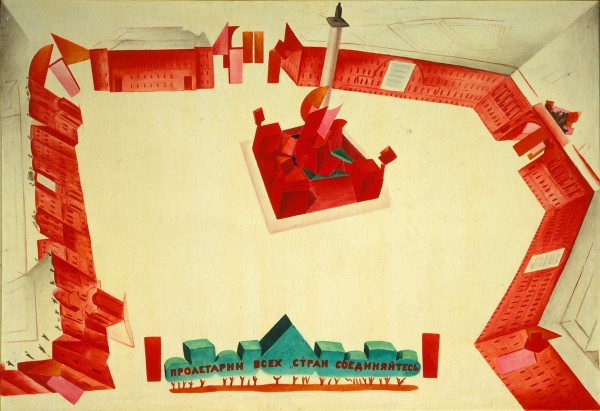The artist is Altman

The city whose image was changed unrecognizably is an important topic in the art of the 1917-1920s.
On the one hand – hunger, war, the hardships of everyday life, a change of estate priorities destroyed the usual panorama of squares and streets, both in both capitals and in the province.
On the other hand, the city of the New World acquired a new face and spoke a different language of other art. The urban space of the first post -revolutionary decade turned into a theater, on the stage stage of which a great festive mystery was played out, with bangs of banners and banners, stunned by the rings of Vladimir Mayakovsky:
Pretty pennies.
From the heart of the old wipe.
Streets – our brushes.
Squares – our palettes.
Book of Time
yarrow
revolutions do not jump the days.
On the streets, futurists,
Drummers and poets!
Nathan Altman, who was instructed to create sketches of the design of the Square of Uritsky (Palace) on the 1st anniversary of the October Revolution, will write in his memoirs: “I set myself the task of changing the historically created appearance of the area. Turn her into a place where the revolutionary people came to celebrate their victory. I did not decorate her. Creations of Rastrelli and Russia did not need jewelry. I wanted to oppose the beauty of imperial Russia. I was not looking for harmony with the old, but the contrast to him “.
The project of decoration presented at the exhibition gives an idea that Altman looked at the entire famous architectural complex as a certain spatial-plastic environment, which should “play” the conceived festive “action about the revolution”. On the buildings of the Winter Palace and the General Staff surrounding the area, a whole system of red -colored banners and panels were located. Huge geometric shields, blazing bright, pure flowers, created a feeling of winning festive fanfare.
But the most avant-garde form was a quadrangular platform-tribune in the center at the base of the Alexander column. In the corners of the two -tier structure were cubes hiding spotlights. Cleaning rooms of complex shapes were pressed close to the column, which were sharply illuminated from the inside during the day and evening. The futuristic composition took the creation of Montferrand into a vise, turned it into a melting, twilight ghost. Blooding geometrically, compared with an energetic red-pink-yellow color resembled the flame of a fire flying to heaven, covering the basis of the pillar of the autocracy of the autocracy.